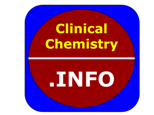Clin Chem. 2025 Jun 13:hvaf072. doi: 10.1093/clinchem/hvaf072. Online ahead of print.
ABSTRACT
BACKGROUND: For 20 years, the United States has experienced a progressive rise in syphilis cases, increasing to >209 000 cases in 2023. The current case rate of 62.5 per 100 000 persons represents a 30-fold increase since 2000-2001, when a concerted national effort nearly eliminated the disease. This review highlights epidemiologic trends, current gold-standard diagnostic methods, emerging diagnostic tests, and key challenges for laboratorians.
CONTENT: The current outbreak in the United States has been marked by dramatic increases in cases among women and men who have sex with women, resulting in 3800 congenital cases in 2023: a 10-fold rise over the last decade. Containing syphilis has been hampered by several factors. Recurrent shortages of the primary treatment, benzathine penicillin G, and a high prevalence of macrolide resistance have curtailed access to single-dose treatment options, necessitating multiday courses of doxycycline. The etiologic agent, Treponema pallidum subsp. pallidum, is a stealth pathogen with protean manifestations, thus posing a clinical challenge. Diagnostic testing, which has seen few updates in decades, has limited sensitivity in early or latent syphilis, and the need to integrate multiple serologic tests can delay turnaround times.
SUMMARY: Public health interventions, such as doxycycline post-exposure prophylaxis, have started to contain the disease, and newer diagnostic tests may offer useful adjuncts for case finding. Serologic testing, with low cost and high sensitivity, is likely to remain the primary method for the screening and diagnosis of syphilis. Sustained investment in public health infrastructure and automation, interlaboratory data sharing, and addressing social determinants of health are critical to the reduction of syphilis cases.
PMID:40510004 | DOI:10.1093/clinchem/hvaf072
